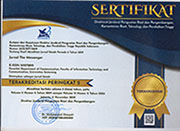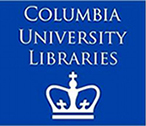Penonton Anak dan Remaja Terkait Program Acara Indonesian Idol Junior 2016: Studi Resepsi Pada Kontestan Anak yang Menyanyikan Lagu-Lagu Orang Dewasa
Abstract
Keywords
Full Text:
PDFReferences
Burton, Graeme. (2007). Membicangkan Televisi: Sebuah Pengantar Kepada Kajian Televisi. Yogyakarta: Jalasutra.
Burton, Graeme. (2011). Membincangkan Televisi, Sebuah Kajian Televisi. Yogyakarta: Jalasutra.
Downing, John, Mohammadi, Ali, and Sreberny-Mohammadi, Annabelle. (1990). Questioning The Media: A Critical Introduction. California: Sage Publication.
Grossberg, L. (2005). Cultural Studies. Retrieved 11 Januari 2016.
Hall, Stuart, Dorothy Hobson, Andrew Lowe and Paul Willis (Eds.). (1986). Culture, Media, Language. London: Hutchinson.
Heiner, R. (2006). Social Problems: An Introduction to Critical Constructionism (2 ed). New York: Oxford University Press.
Kincheloe, Joe L. and Mc Laren, Peter. (2005). Rethinking Critical Theory and Qualitative Research. Dalam Norman K. Denzin and Yvonna S. Lincoln (Eds.), The Sage handbook of Qualitative Research (3rd ed). USA: Sage Publication.
Littlejohn, Stephen W. and Foss, Karen A. (2008). Theories of Human Communication (9th ed). Belmont, USA: Wadsworth, A Devision of Thomson Learning, Inc.
Mosco, Vincent. (1996). The Political Economy of Communication. Rethinking and Renewal. London: SAGE Publications.
Patton, Michael Quinn. (2002). Qualitative Research and Evaluation Methods. London: Sage Publications, Inc.
Prajarto, Nunung. (2006). Media Komunikasi: Siapa Mengorbankan Siapa. Yogyakarta: FISIPOL UGM.
Sunarto. (2009). Televisi, Kekerasan dan Perempuan. Jakarta: PT Kompas Media Nusantara.
http://www.duniatv.net/2016/10/the-voice-kids-indonesia-jadi-program.html, akses tanggal 17 Januari 2017.
http://www.hukumonline.com, akses 26 Desember 2016, pukul 00.02 WIB.
http://indonesianidoljunior.com/syarat-dan-ketentuan-indonesian-idol-junior akses 17 Januari 2017.
http://www.jogjalive.com/wagub-diy-pa-x-lagu-anak-anak-telah-punah/, akses tanggal 25 Desember 2016, pukul 23.42 WIB.
https://www.kpi.go.id/index.php/lihat-terkini/38-dalam-negeri/33564-program-pembinaan-isi-siaran-mengembangkan-siaran-ramah-bagi-anak-dan-perempuan, akses 26 Desember 2016, pukul 11.17 WIB.
http://www.kpi.go.id/index.php/terkini/30944-anak-indonesia-kedapatan-paling-lama-menonton-tv, akses tanggal 15 Januari 2017.
http://www.republika.co.id/berita/koran/didaktika/16/02/05/o22e8g5-tayangan-berkualitas-untuk-anak-minim, akses 26 Desember 2016 pukul 00.20 WIB.
http://www.viva.co.id/prancis2016/read/462906-adi-bing-slamet-industri-musik-anak-sudah-mati, akses tanggal 25 Desember 2016, pukul 23.35 WIB.
DOI: http://dx.doi.org/10.26623/themessenger.v9i1.427
Refbacks
- There are currently no refbacks.
Copyright (c) 2017 Jurnal The Messenger
View My Stats [Jurnal The Messenger] is an International Scientific Journal, Published by the Department of Communication, Faculty of Information Technology and Communication, Universitas Semarang (Central Java, Indonesia). It is licensed under a Creative Commons Attribution 4.0 International License.



_11.jpg)




_BARCODE.jpg)
_BARCODE1.jpg)


5.png)










2.png)





